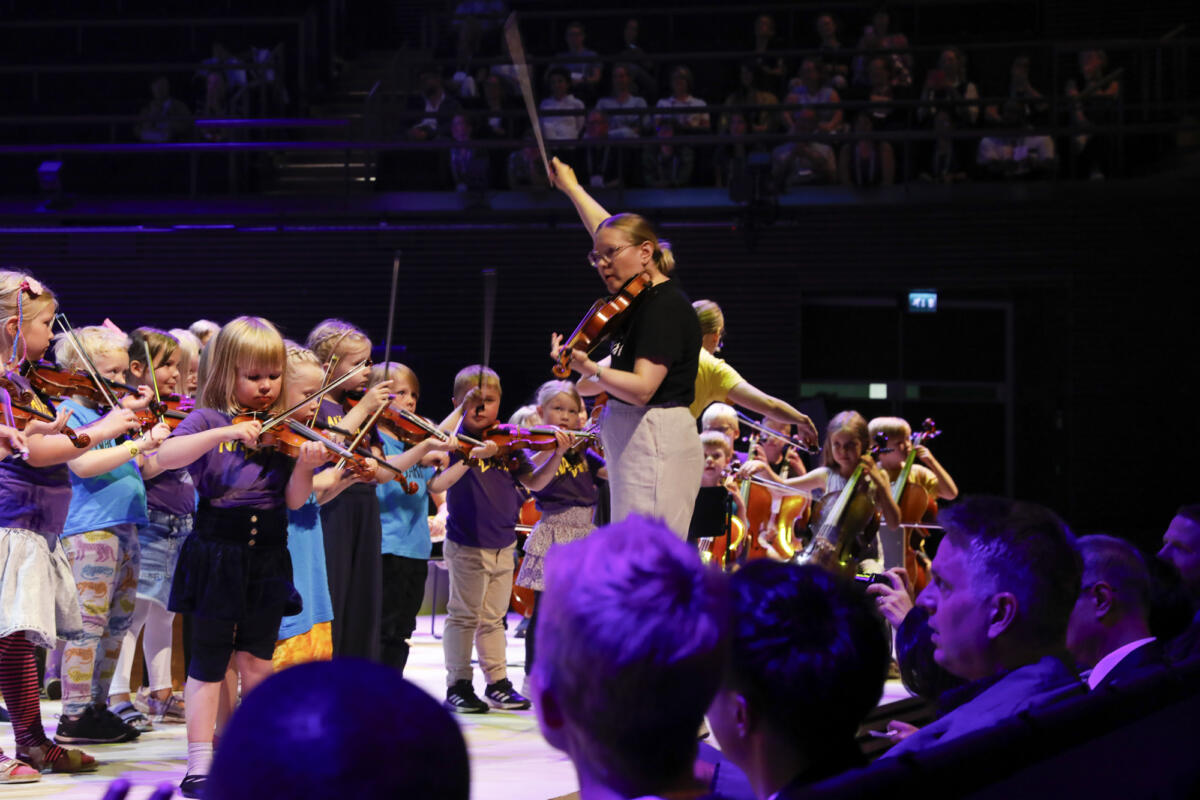Finnish music schools and children’s performances should be celebrated
The core idea of the Finnish music education system is to enable all children to enjoy making music, individually or in groups, regardless of their background, skill or performance level.

Music journalist Kare Eskola writes (Yle, 24.9.2024), that children give up their music hobbies after a few years because ‘in the early stages, it sounds too dull.’ According to Eskola, music and playing are being taught incorrectly at Finnish music schools.
Eskola highlights the Näppäri pedagogy as an example of a good music education method. To our delight, this example reflects Finnish music education in general, as the same pedagogical methods used in Näppäri pedagogy are widely used in our music institutions.
In addition, teachers at music schools use a wide variety of other proven methods across genres, avoiding unnecessary polarisations. Efforts are made to provide group lessons and ensemble playing opportunities for children of all skill levels, also on instruments that do not belong to the Western classical music tradition.
The strength of Finnish music institutions lies precisely in their diverse pedagogy, tailored to meet the needs and interests of different learners – not to mention the fact that it supports students’ voices and the joy of individual and collective music making from the elementary level all the way to the advanced level.
Practice is part of all music pedagogy
We want to celebrate and support the award-winning Näppäri pedagogy, as well as strengthen the international excitement spreading around it. We also want to cherish a broad music culture that encourages young children to perform even when they are just beginning to master their instruments.
We also acknowledge that the beautiful performing practices of Näppäri, where multigenerational musicians with different expertise levels share the joy of music making, are also happening in other musical groups within Finland associated to the Western classical music tradition.
For instance, at the Collegium ry and at several Finnish orchestras, children are invited to play at significant professional concerts and relevant venues.
Playing an instrument is a skill that, in addition to passion, also requires dedicated practice, as all specialised expertise does. Mastering the instrument is learned systematically in one-to-one lessons, where the child has the undivided attention of the teacher. Such lessons are also an integral part of Näppäri pedagogy. Playing in a large group is not the only way for all children to practice playing and performing.
Many players within Näppäri are also enrolled in the Finnish formal music school system. The founder Mauno Järvelä himself is trained as a musician in accordance with the Western classical music tradition and has worked with orchestras within that repertoire but has done his life’s work strongly in folk music.
Folk, classical and any other music genres and learning and performance traditions should be celebrated, not compared against each other.
Toward more inclusive learning environments
Music schools in Finland have been critically assessed by internationally recognised music education researchers at the Sibelius Academy of Uniarts Helsinki, revealing several points for improvement and pitfalls (see, for example, ArtsEqual outputs).
This deep and thoughtful analysis, along with the long-standing internal debate within the music education field, has provided an opportunity for the music education system to engage in self-criticism and move toward more sustainable practices. This is impacting vocal and instrumental music teachers in Finland, who depart more and more from the old-fashioned practices of the master-apprentice tradition from past decades.
Finnish music schools invest in developing pedagogical practices that consider all types of learners. As a result, the system is continuously moving towards more inclusive, diverse, child-friendly and constructive approaches to learning.
Similarly, at the Sibelius Academy, our teaching and learning strives towards research-based evidence, and the pedagogical knowledge our students – the future music school teachers – acquire during their pedagogy studies equips them holistically to meet the needs and interests of children learning at music schools and beyond. The aim is to foster the love and joy of making music in whatever context they choose to be.
Many music teachers are exceptional in constructively nurturing their students’ interests, as can be read in this year’s report “Perceived effects of cultural pursuits survey results basic art education”.
The strength of the Finnish music education field lies in its continuously growing diverse offerings for both music enthusiasts and those aiming for professional studies. At the core, there must always be the child, the student, as well as the joy of playing and collaborating together.
A society that supports formal art schools and celebrates children’s performances and artistic expressions is a thriving society.
Yvonne Frye, Lecturer in Instrumental Pedagogy and Violin Music
Guadalupe López-Íñiguez, Research Council of Finland Fellow, Docent of Music Education, University Researcher in Instrument Pedagogy
Niklas Pokki, Lecturer of Piano Music and Piano Pedagogy, Head of the Piano Department
Tuuli Talvitie, Vice Dean Responsible for Research and Näppäri since the 1980s
The authors are faculty members of the Sibelius Academy of Uniarts Helsinki